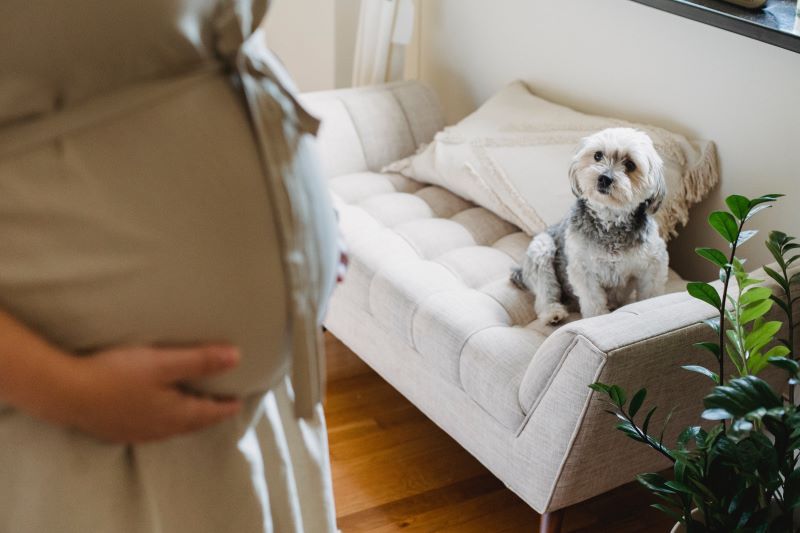4 min read
706 words
Bringing a new baby into your home is a big change that can be overwhelming for both you and your furry friend. Pets are sensitive to changes in their environment and routines, so it’s important to prepare them for the new arrival. By following our guide, you can help your pet adjust to the changes and ensure a harmonious relationship between your pet and new baby.
1. Begin Early:
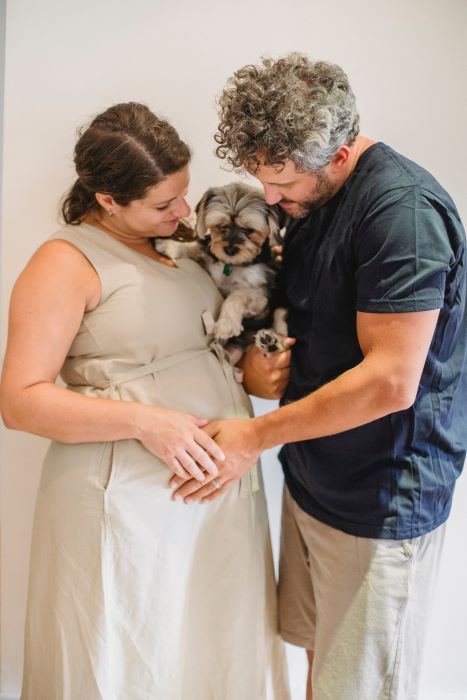
It is essential to start preparing your pet for the baby’s arrival as early as possible. If possible, begin making changes during your pregnancy to give your pet ample time to adjust. Gradual introductions to baby-related items and changes in routines can help your pet become familiar with the impending changes.
2. Socialization and Training:
If your pet is not already well-socialized and trained, now is the time to focus on these aspects. Enroll them in obedience classes, reinforce positive behaviors, and expose them to different environments. A well-trained pet will be more responsive and easier to manage when the baby arrives.
3. Create New Boundaries:
Designate areas in your home where the pet will have limited access once the baby arrives. This can be the nursery or specific rooms where the baby will spend a lot of time. Start implementing these boundaries early to avoid confusion later on.
4. Familiarize Your Pet with Baby Smells:
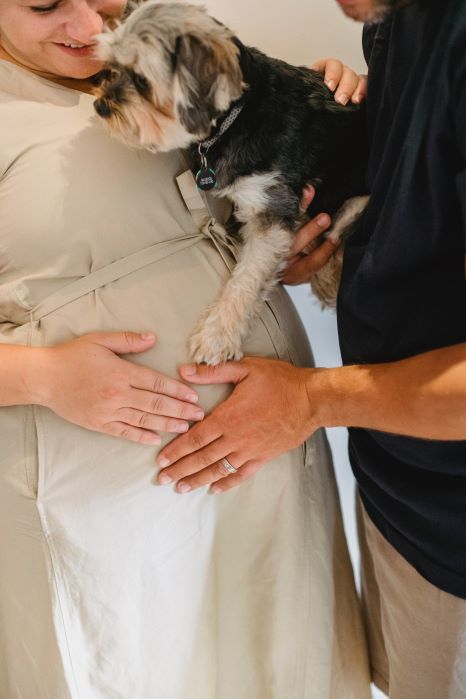
Babies have a distinct scent that can be unfamiliar to your pet. To help them get used to this new scent, introduce baby-related smells gradually. Allow your pet to sniff baby powder, lotion, or clothes before the baby comes home. This can create a positive association with the baby’s scent.
5. Use Audio Recordings:
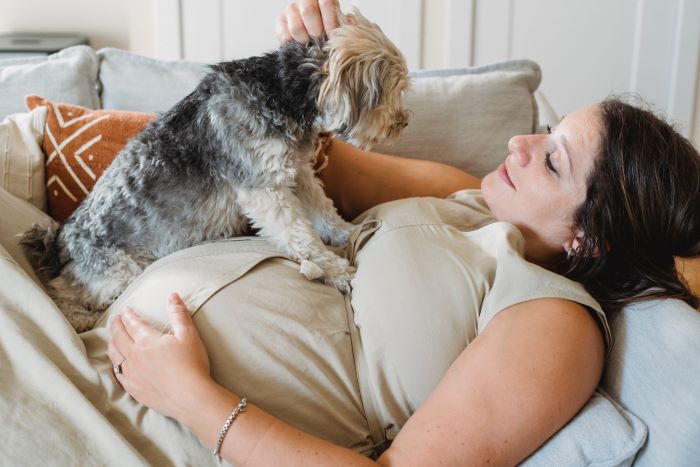
Babies can be quite noisy, and these new sounds may startle your pet. Play recordings of baby sounds, such as cooing or crying, at low volumes initially, and gradually increase the volume over time. This will help your pet become desensitized to these sounds and prevent unnecessary anxiety.
6. Desensitize to Baby Equipment:
Introduce your pet to baby equipment, such as strollers, cribs, and baby swings, before the baby arrives. Allow your pet to investigate and explore these items, making sure they associate them with positive experiences.
7. Adjust Daily Routines:
If your pet’s daily routines, such as feeding or walking schedules, are going to change after the baby’s arrival, start making these adjustments in advance. Gradually shift meal times or walking routines to mirror the new schedule. This will prevent sudden disruptions that could stress your pet.
8. Positive Reinforcement:
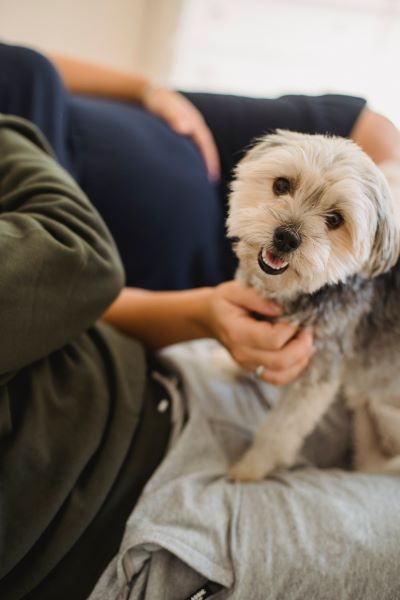
Reward your pet with treats, praise, and affection when they display calm and positive behaviors around baby-related items. Positive reinforcement is an effective way to create positive associations with the changes happening in the household.
9. Get Your Pet Checked by a Veterinarian:
Before the baby arrives, schedule a check-up with your veterinarian to ensure your pet is in good health. Address any potential health concerns, and discuss behavior strategies that can help your pet cope with the upcoming changes.
10. Gradual Introduction:
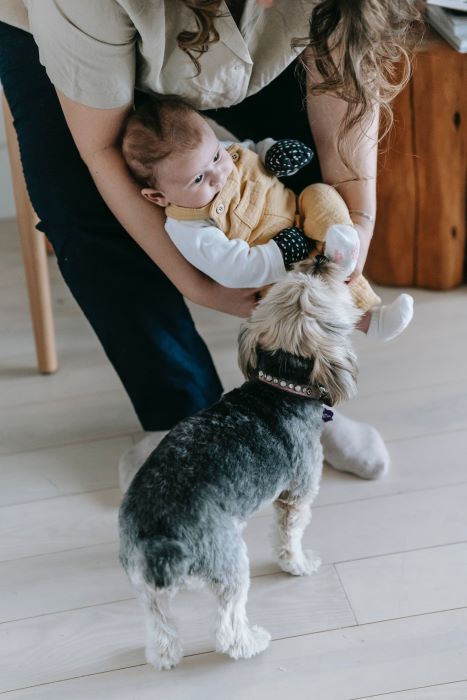
When the baby finally arrives, the first meeting between your pet and the baby should be gradual and controlled. Allow your pet to observe the baby from a safe distance, using baby gates or leashes, while offering treats and praise. This positive reinforcement will help your pet associate the baby with positive experiences.
11. Supervision is Key:
Always supervise interactions between your pet and the baby, especially in the early stages. Never leave your pet and baby alone together. As your baby grows, teach them to interact gently with the pet and respect the animal’s boundaries.
12. Maintain Love and Attention:
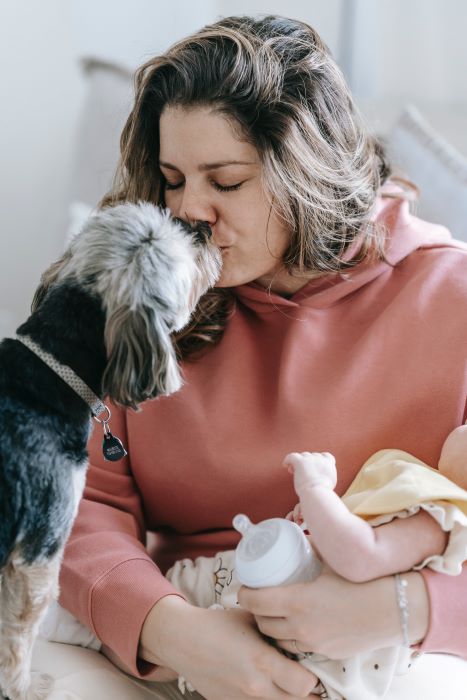
With all the attention the new baby will receive, it’s essential to continue showing affection and attention to your pet. Designate specific one-on-one time for play, walks, or cuddles to reassure your pet that they are still loved and valued members of the family.
In conclusion, preparing your pet for the arrival of a new baby requires patience, consistency, and a proactive approach. By following the tips and advice outlined in this comprehensive guide, you can help your pet adapt to the changes and ensure a smooth transition for everyone involved. Remember, with proper preparation and training, your pet can become a loving and nurturing companion to your new baby.
